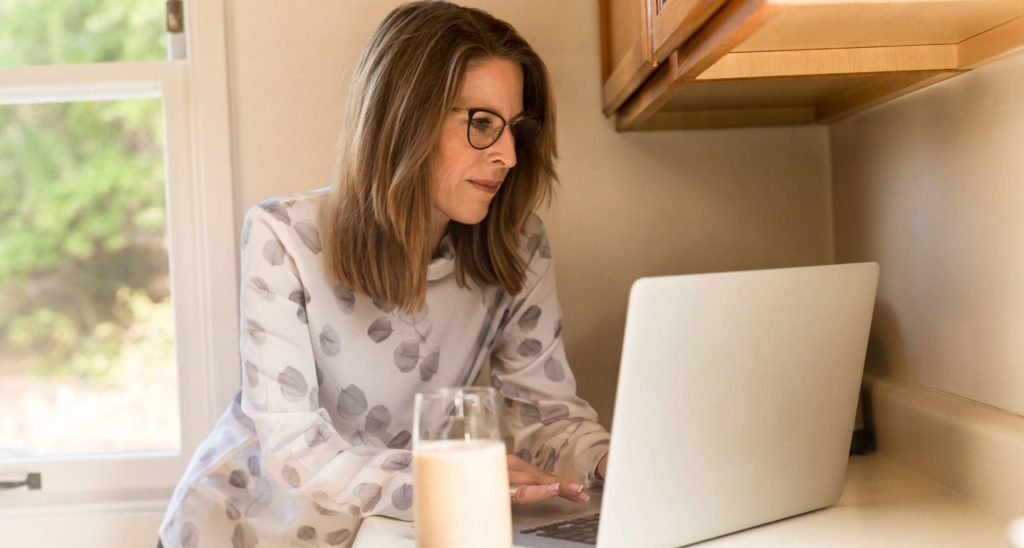
Although working from home is not a novel concept, it is a completely new phenomenon for many who have never had the ability or inclination to work remotely before. As we make adjustments in so many aspects of our lives, it’s helpful to get some tips on how to stay both mentally and physically healthy during these uncertain times as the Coronavirus affects our lives in big ways and small. The implementation of telehealth solutions for all patients will undoubtedly help to mitigate loss of any physical therapy gains and is now available as another resource for our communities.
First and foremost, let’s acknowledge that any kind of change can be difficult–at first. Think of a rocket ship—it uses almost all of its fuel to get its momentum going, but once it’s moving, it’s really heading places!
Five ways to stay healthy while working from home.
-
Start your day as if you were going into the office.
It’s a mindset shift that keeps you focused and your work as a priority in your life. At home, distractions are real, and making sure you set yourself up for success early ensures a better home office balance.
Wake up early, and go through your normal morning routines (shower, brush your teeth, etc.)—and even dress the part too! Having a clear structure to start your day is important, and a little slack in small places can turn into lack in others. Guard yourself from yourself, and keep that dream of working in your pajamas in your dreams. Trust us, you’ll get more time to relax at the end of the day by doing this. If you get good at this, then you can treat yourself to start wearing workout clothes, which can be a subtle reminder to work out later too. How’s that for efficiency!
-
Find your at-home work location.
To work effectively from home, you need a dedicated space. Make sure it’s comfortable and that you associate it with your work so you can physically leave that space once you’re off the clock. This can be a corner in the kitchen—even a space in the closet—but avoid the couch, and definitely DO NOT work from your bed. Finding the right spot allows your mind to associate a physical space with work, period. If you’re really fortunate, you’ve chosen a space where you can close a door so you can focus. Be creative, and rearrange furniture if you have to.
-
Set a schedule and stick to it.
Whether you’re a single professional or a part of a family with kids that are at home too, a schedule that everyone is aware of will help your “office-life” function much more productively. Time-management is also stress management. Proactively think of the things that you (and your family) will need to be doing during the day, and schedule these items based on priority and time of day available for them.
Think of your work-from-home hours the same way you would office hours. That 9–5 block should remain the same. Too often we can just keep working well into the evening while at home, and that can lead to burnout fast!
Here’s a quick guide to help:
List it!
Write out all the items you want or need to accomplish in this order: daily, weekly, and monthly.
Place it!
For your dailies, put the “musts” at the top of the list and begin to add them into your calendar on an hourly level. So if you know you must eat lunch, then schedule that in. Really do it. You’ll be surprised that you worked through lunch when there’s not a coworker nipping at your heels to join them.
If there are more to-do’s than your day can fit, then put them into your weeklies, repeat the “must do this week,” and add each on in a day of the week that you know you can accomplish it. For instance, meal preps can all be done on Sundays.
Lastly repeat this process for your monthlies and prioritize all that you can do.
If you’re a head-of-household member, help your kids and partner do the same.
Schedule breaks so you can move and reset. We recommend using the Pomodoro Technique–45 minutes of deep focus followed by 15 minutes of break time. That 15 minutes gives you the chance to do whatever you want, so use it and then get back to pure focus afterward.
Share it!
Now that you have this schedule, use it by posting it in your digital calendar, complete with alarms to keep you active.
Doing this activity as a household can be fun and can make clear certain boundaries necessary for being in a shared space for lengthy times.
-
Plan an exercise (our favorite)!
Of course, we have to make sure you’re moving! If you’re a current patient of ours, you have and should be performing a prescribed Home Exercise Program. Good on you that you can continue to schedule it in with that extra time not having a commute! Every so often, make sure you get up, walk around and stretch your entire body! Use that Pomodoro 15-minute break, or even walk around during a conference call.
Although it doesn’t have to be between your work projects, we do recommend getting a MINIMUM of 30 minutes a day of movement.
-
Close your eyes and breathe.
OK, so technically we are mashing these two techniques into one. First, taking care of your eyes is very important in smaller environments. Your eyes need a break just as much as the rest of your body. The 20-20-20 rule is every 20 minutes, look 20 feet away for at least 20 seconds. Just try not to get distracted.
Why did we attach breathing to this?
Focusing on your breathing can be a great way to reduce stress and even keep you more productive. Many people use a mindfulness practice to slow down and realign with what they’re doing so they can stay in the moment and asses what they’re currently working on with a fresh perspective.
Luckily, both practices can be done together and equally last for 20 seconds!
By taking the time to include these workplace basics, you can optimize your space for better health, comfort, and productivity!
Stay Flexible with CORA by Your Side, Virtually Anywhere
Stay connected with us for news, updates, and community conversations created for you and by you. As each day passes, we are finding more ways to deliver meaningful content that meets you where you are, no matter where you are at home, at work or inside one of our CORA clinics.
Facebook: @CORAPhysicalTherapy
Twitter: @CORAPTherapy
Instagram: @CORApt
LinkedIn: @CORAPhysicalTherapy
Want to contribute? Is there a topic that sparks your curiosity? Email connect@corahealth.com to let us know and you might just see it in our next blog.
Contact our dedicated COVID-19 Response Team at coronavirusinfo@corahealth.com ready to respond with answers to your questions or concerns at a moment’s notice!
Is yours one of the hundreds of insurances that participates with telehealth? Schedule a virtual appointment, email us at coravision@corahealth.com.
And continue to check our website for updated information about our commitment to safety – it’s protection, prevention and action you can count on!
